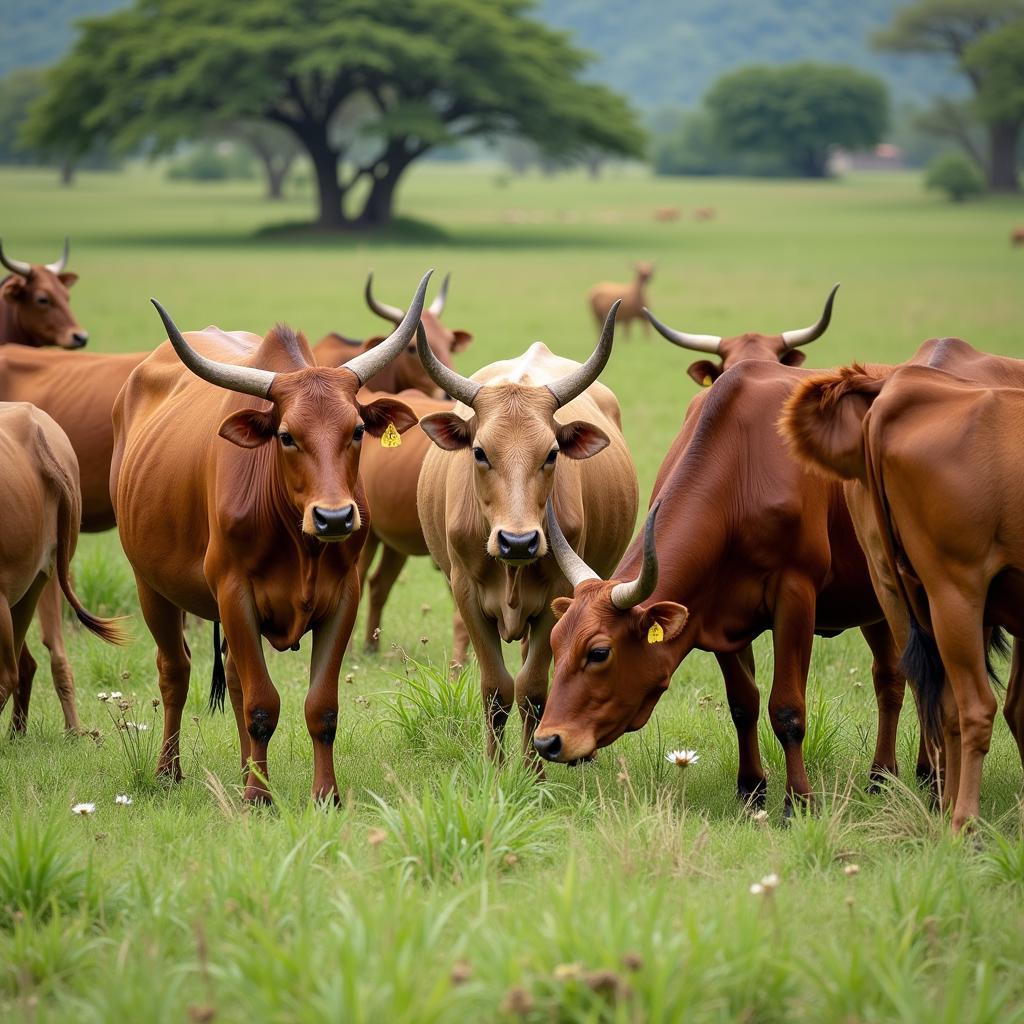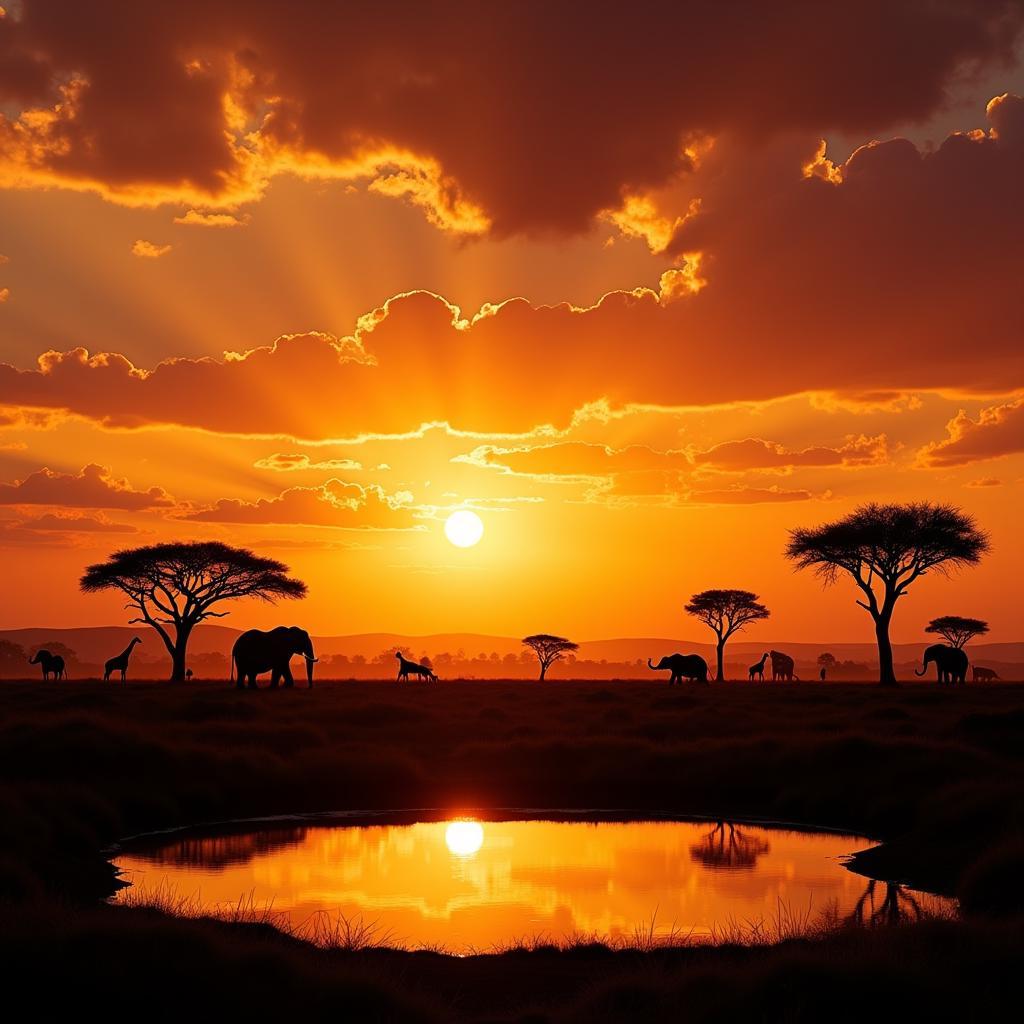African Big Cow Breeds: A Guide to the Continent’s Majestic Bovines
African Big Cow Breeds play a vital role in the continent’s culture and economy. These impressive animals, adapted to diverse climates and terrains, are essential for livelihoods, providing milk, meat, and even acting as draft animals in some communities. From the hardy N’Dama to the majestic Boran, African cattle represent a rich tapestry of genetic diversity and cultural significance. This guide explores some of the most prominent large cow breeds found across Africa, highlighting their unique characteristics and contributions to the continent’s agricultural landscape.
Unveiling the Giants: Notable African Big Cow Breeds
Across Africa’s varied landscapes, several large cow breeds have adapted and thrived. These breeds, often prized for their size and resilience, represent an important part of the continent’s agricultural heritage.
The N’Dama: A West African Treasure
The N’Dama, originating from West Africa, is renowned for its trypanotolerance, a natural resistance to the trypanosomiasis parasite, also known as sleeping sickness. This remarkable trait allows them to thrive in areas where other breeds struggle. Their hardiness makes them an invaluable asset to farmers in challenging environments.
 N'Dama Cattle Grazing in West Africa
N'Dama Cattle Grazing in West Africa
The Boran: A Symbol of Strength and Adaptability
The Boran, hailing from East Africa, is a large, impressive breed known for its adaptability to harsh climates. Their large frame and distinctive hump make them instantly recognizable. Borans are highly valued for their beef production and are a popular choice for commercial ranching. They can endure drought conditions and exhibit impressive heat tolerance.
 Boran Cattle in East African Landscape
Boran Cattle in East African Landscape
The Sanga: An Ancient Lineage
The Sanga, considered one of the oldest indigenous cattle breeds in Africa, is believed to be the ancestor of many modern African breeds. They are known for their large horns and impressive size. Sangas are valued for their hardiness and adaptability to a wide range of environments, contributing significantly to the livelihoods of many African communities.
Why Size Matters: The Advantages of Big Cow Breeds
Large cow breeds in Africa offer several advantages, making them a valuable asset to farmers. Their size translates to greater meat production, offering a significant economic benefit. Their robust build also makes them more resilient to harsh climates and diseases prevalent in certain regions. These breeds often contribute to both milk and meat production, playing a dual role in supporting livelihoods.
 Advantages of African Big Cow Breeds
Advantages of African Big Cow Breeds
Caring for African Big Cow Breeds: Best Practices
Understanding the specific needs of these majestic animals is crucial for their well-being and productivity. Providing adequate nutrition, access to water, and regular veterinary care are essential components of responsible animal husbandry. Implementing sustainable grazing practices helps protect the environment and ensures the long-term health of the herd.
Conclusion: Celebrating African Big Cow Breeds
African big cow breeds are an integral part of the continent’s rich tapestry of life. Their adaptability, resilience, and economic importance contribute significantly to the livelihoods of communities across Africa. From the trypanotolerant N’Dama to the heat-resistant Boran, these magnificent animals represent a valuable genetic resource and a testament to the continent’s diverse agricultural heritage. By understanding and supporting sustainable practices, we can ensure the continued prosperity of these important breeds for generations to come.
FAQ
-
What are the most common big cow breeds in Africa?
Some common large breeds include the Boran, N’Dama, and Sanga. -
Are African big cow breeds resistant to diseases?
Some breeds, like the N’Dama, possess a natural resistance to trypanosomiasis. -
What are the main uses of these breeds?
They are primarily used for meat and milk production, and sometimes as draft animals. -
How are these breeds adapted to African climates?
Many have developed traits like drought tolerance and heat resistance. -
Where can I find more information on specific breeds?
Further research can be conducted online and through agricultural organizations. -
How do I start farming African big cow breeds?
Consult with local agricultural experts and research breed-specific requirements. -
What are the challenges of raising these breeds?
Challenges can include access to resources, disease management, and market fluctuations.
Need more assistance? Contact us: Phone: +255768904061, Email: kaka.mag@gmail.com or visit us at Mbarali DC Mawindi, Kangaga, Tanzania. We offer 24/7 customer support.


